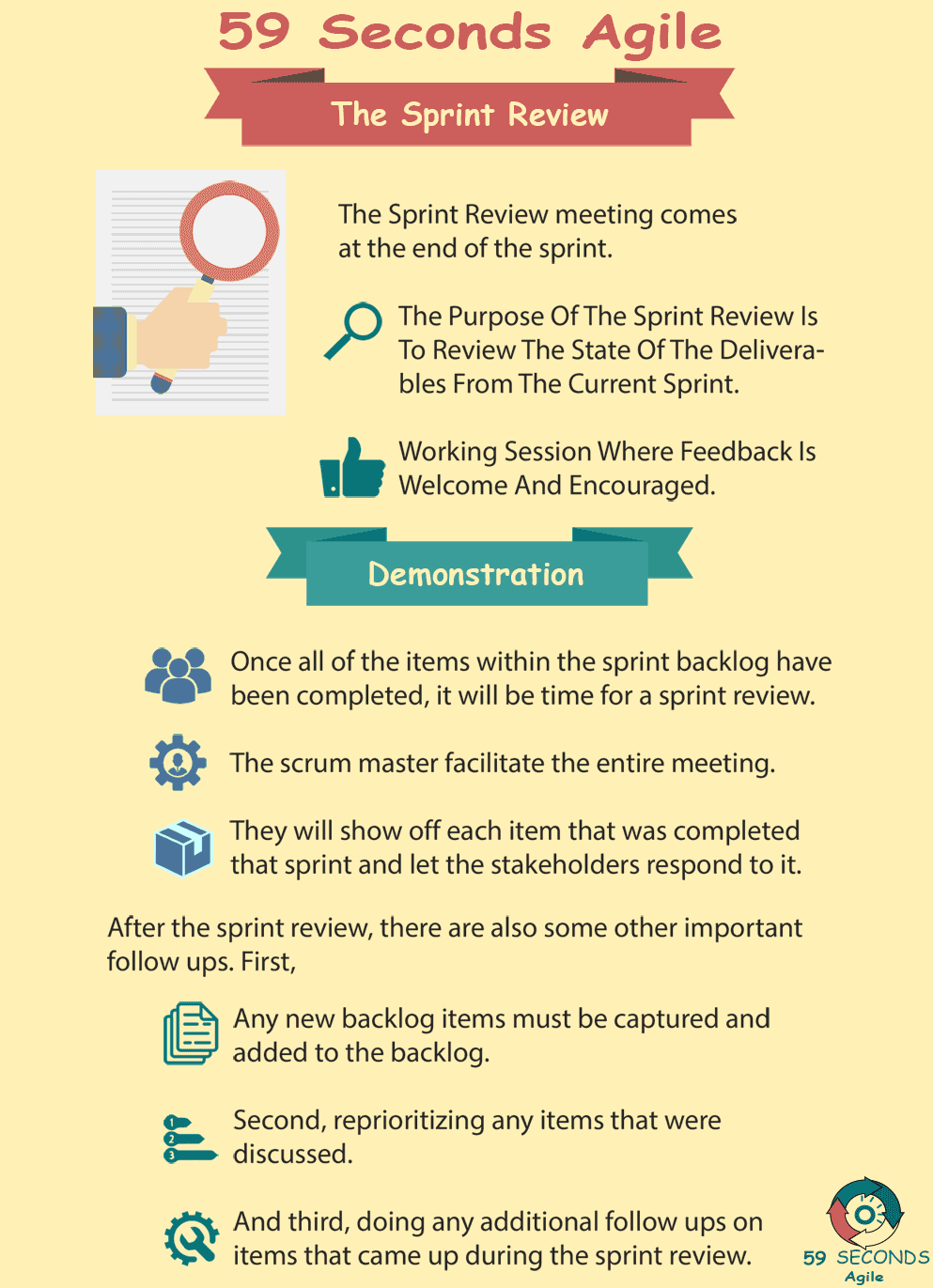What is the Scrum Sprint Review Meeting and what role do the Development Team plan within this meeting? The developers play an important role in the Scrum Meeting.
Sprint Review Meeting
A 59 Seconds Agile Video Animation
The Sprint Review Meeting for Developers?
A 59 Seconds Agile Article
With the sprint review meeting, developers get responses “straight from the horse’s mouth.” Stakeholders can immediately voice their approval or rejection, made official by the product owner. For rejections, developers hear exactly why stakeholders do not approve of the feature. They get direct concerns, as well as changes that the product owner or stakeholders want for the feature. With this information, developers are better equipped to make exactly what changes would produce a better feature and product.
Even in the case of feature acceptance, developers get a better indication of how much the stakeholders approved. If the feature was a great success, developers know that they did something right. If, however, a feature barely got accepted, developers realize that they should make changes moving forward. The ultimate goal is to deliver value to customers, and a better approval yields more value.
Scrum Sprint Review Without Developers
The best way to appreciate what developers do for the sprint review meeting is to imagine the meeting without developers. If no developers were present, the sprint review meeting might go well until technical concerns come up. Without developer expertise, other roles rarely know the intricate details of how the software works. Analysts know how the software should behave, but not how it was created. Quality assurance technicians know whether there are problems, but not how they might work. Only the developers know how the features were created, and have an understanding of how they work.
Scrum Sprint Review: Accept or Reject
Beyond technical concerns, someone on the team would have to forward acceptance or rejection to the developers. Even if someone records minutes for the meeting, will it have all of the necessary details? Developers may have the intuition to ask about details that other roles may not have considered. This means that developers would have to talk with stakeholders later to clarify details before they can go about fixing rejected issues or moving forward with accepted features.
Developers are important in the Agile process even into the sprint review meeting. A meeting that is normally attributed to the product owner and scrum master benefit greatly from developer presence. Plus, developers get access to information that would otherwise be passed around and lose meaning before reaching the recipient.
Prev <— Continue Reading —> Next
Learn More: Agile Sprint Review and Retrospective
User Stories Applied
A 59 Seconds Agile Book Review
User Stories Applied by Mike Cohn is one of our favourite books on Agile User Stories. The book starts with an overview into user stories, and details what a user story is and the different aspects of them. He then discusses how to go about writing a user story, and provides details of the INVEST criteria that can be used to determine if the story is meeting all of its objectives. Next Mike gives an in depth discussion of who user stories are written for and where to begin when gathering the details for them. The book then discusses acceptance testing user stories, including how to go about specifying these criteria and the responsibilities of the development team and customers during this process.
Prev <— Continue Reading —> Next
Learn More: Agile Sprint Review and Retrospective
Agile Sprint Review and Retrospective
A 59 Seconds Agile Infographic

Prev <— Continue Reading —> Next
Learn More: Agile Sprint Review and Retrospective
Our Favourite Agile Books
We found these books great for finding out more information on Agile Scrum:

